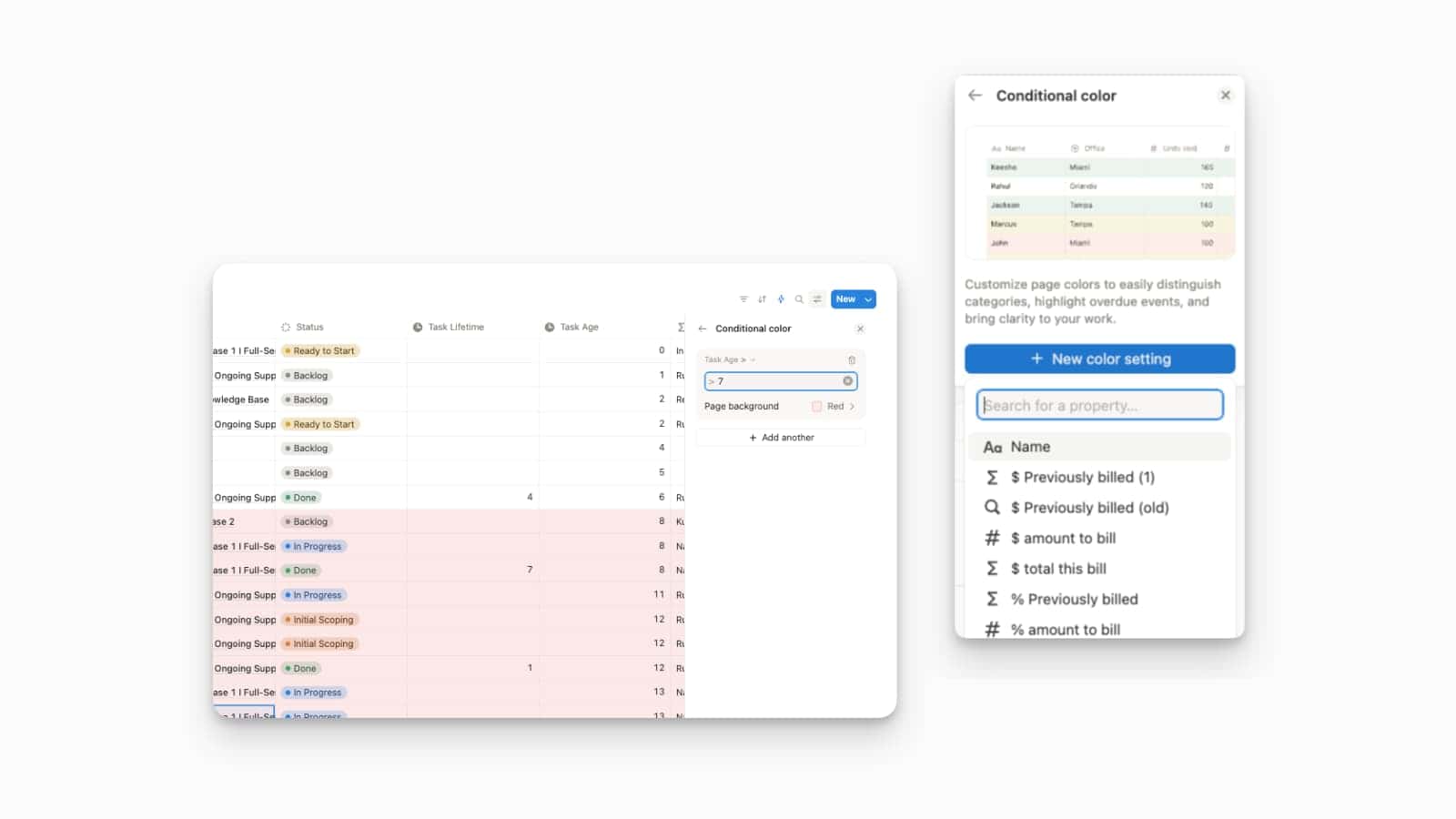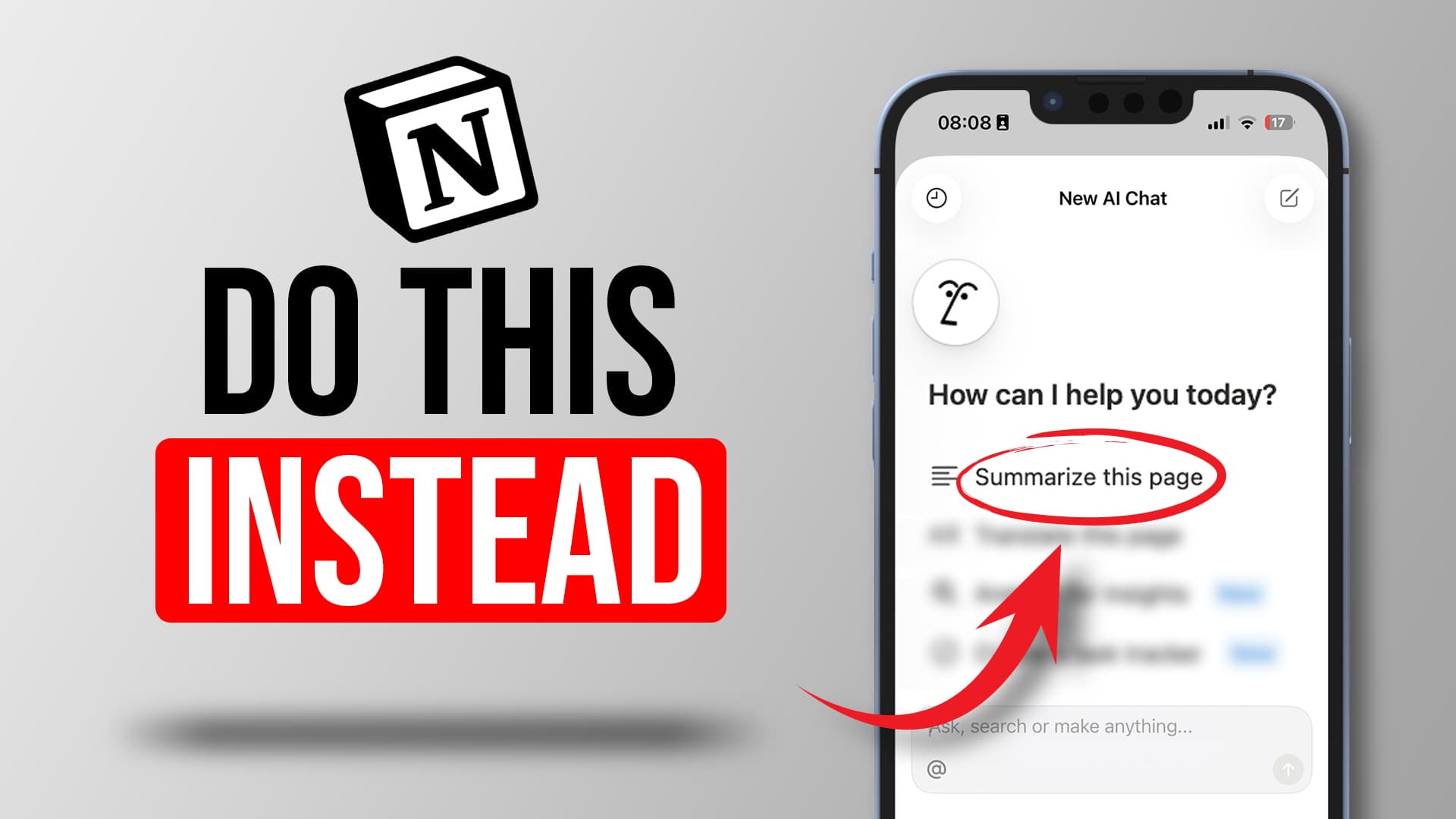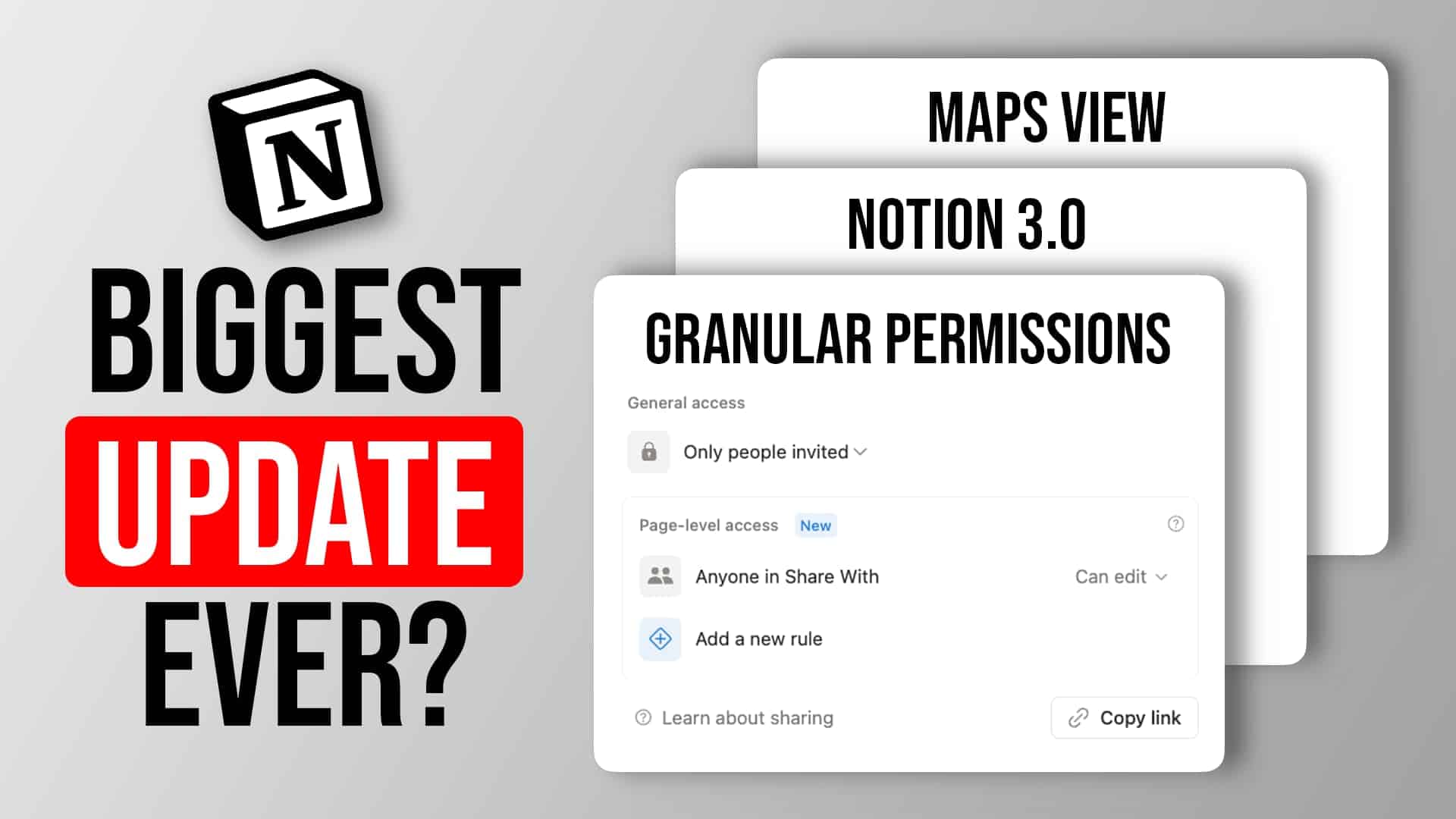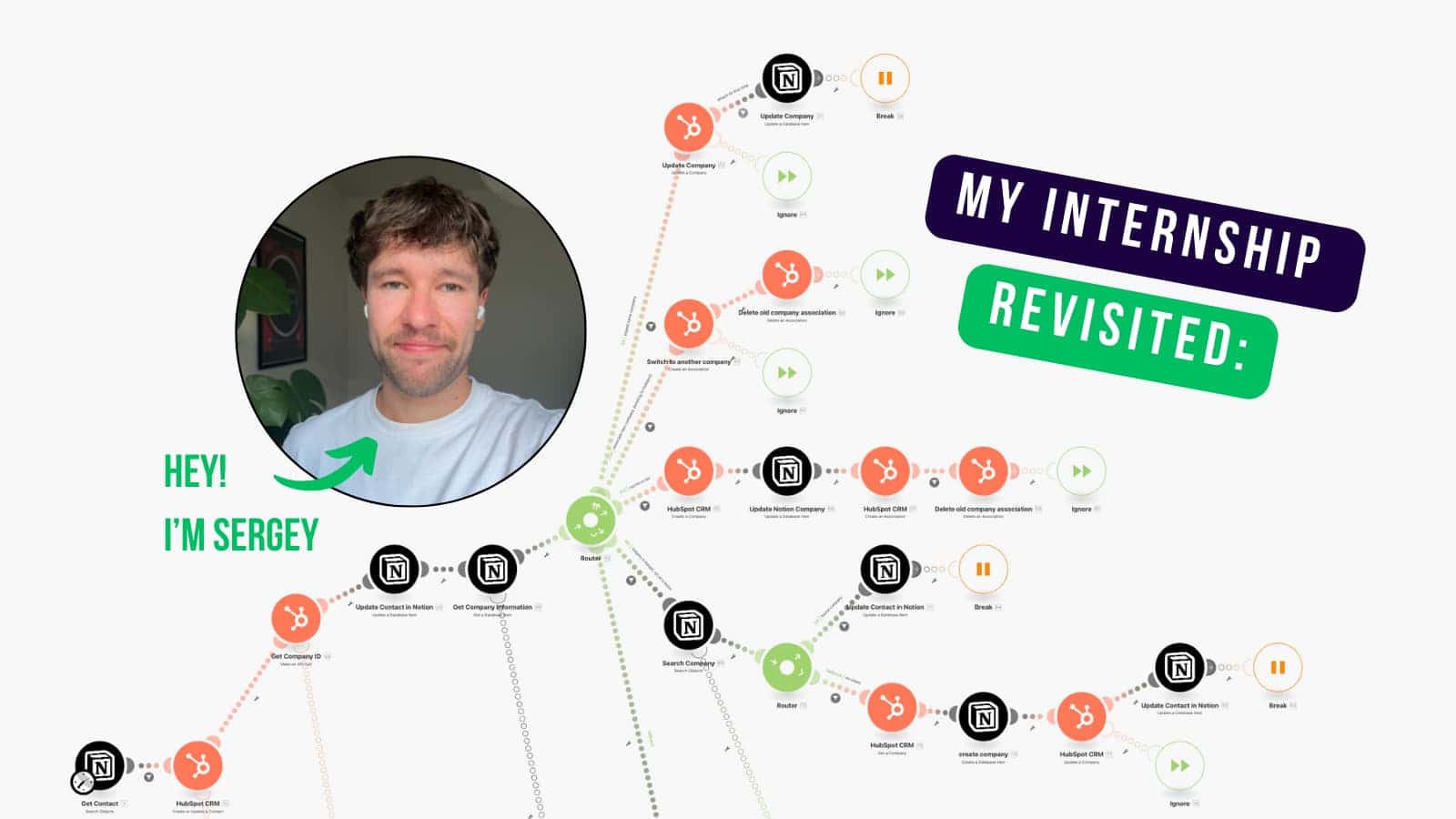Notion AI has become an incredibly powerful agent that can change the way you operate in Notion.
But, as with all AI, you really need to know how to prompt it to maximise results.
Otherwise, you keep running into annoying issues like when you try to process large amounts of data and it keeps insisting that it will operate in the background even though it doesn’t do anything.
My team and I have battle-tested Notion AI over the past few weeks and months and it has quickly become an irreplaceable part of our daily workflows. This is our collection of tips to make the most of it.
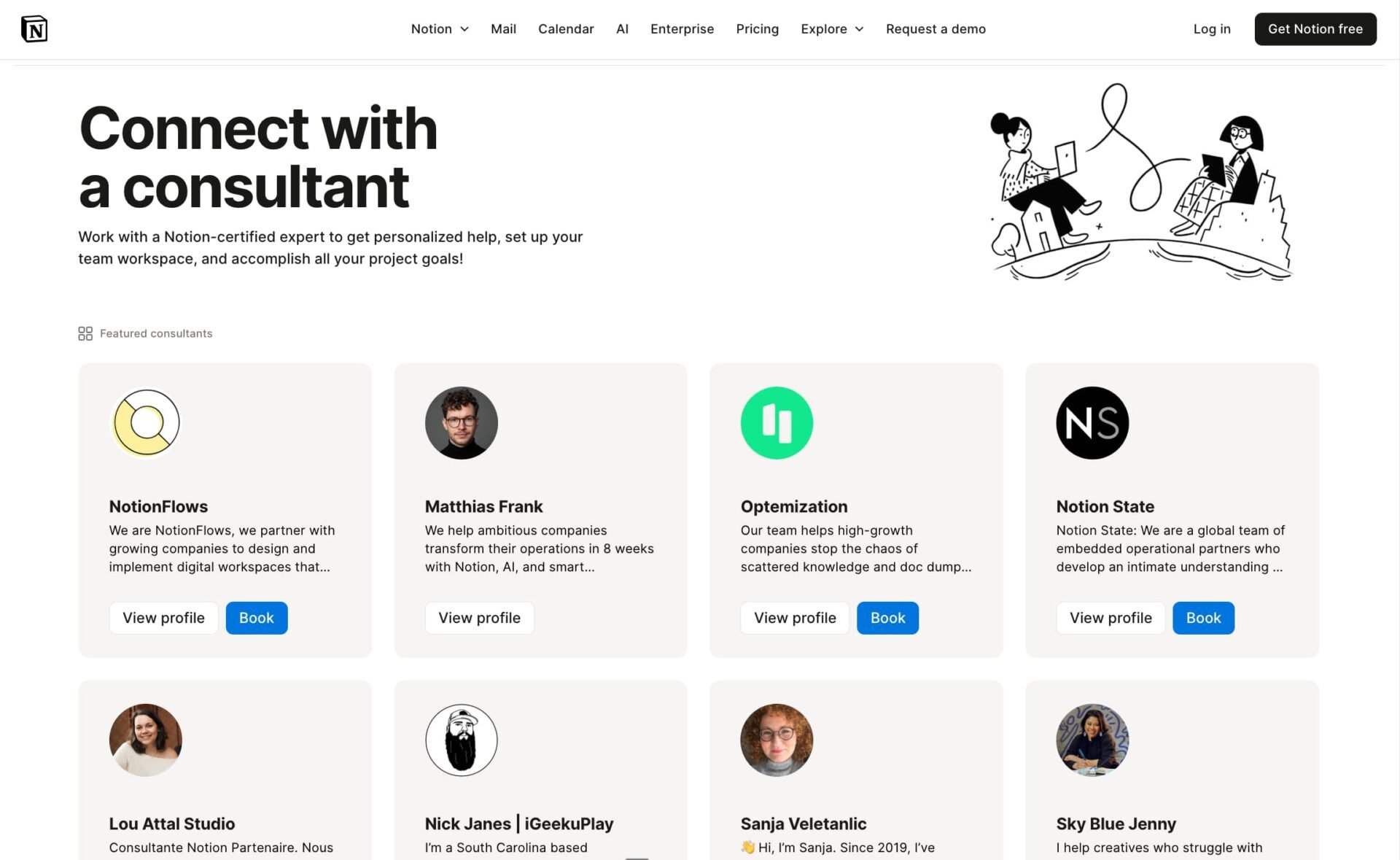
Why listen to us? Because Notion is the first app we open every morning and the last one we close at night. We’ve helped dozens of companies adopt Notion and more than 1,000 employees use our systems every day. Oh, and when Notion launched their new consultant program, we were among the featured consultants 😎
The Problem With How Most Teams Use Notion AI
You’ve enabled Notion AI for your workspace. You’ve tried it on a few tasks. Maybe you even got excited about the possibilities.
But when you check in on actual adoption, here’s what you find:
Half your team tried it once and gave up. The other half uses it for basic rewrites and summaries. Nobody trusts it for complex work. And that big automation project? Still stuck in the “exploring” phase.
Sound familiar?
Here’s why this happens:
Most teams approach Notion AI the same way they approached ChatGPT when it first launched—type a vague request, hope for the best, get frustrated when it doesn’t work.
That casual prompting approach works fine for simple tasks like “make this email more professional” or “summarise these meeting notes.”
But your ambitions are bigger now.
You want AI to maintain complex databases without constant supervision, execute multi-step workflows autonomously, make consistent decisions based on your specific processes, and actually save your team hours of work instead of creating more cleanup.
The gap between those two use cases is enormous. And you can’t cross it with casual prompting.
What Structured Prompting Actually Means
Structured prompting is a systematic approach to crafting Notion AI requests that combines clear process definition, self-documentation requirements, autonomous operation instructions, and explicit success criteria.
Instead of asking AI to “create a progress report,” you provide:
- The exact step-by-step process to follow
- Instructions to document its own progress
- Permission to work autonomously without interruption
- Clear definition of what “done” looks like
The difference in results is dramatic. We’ve seen teams achieve 80-90% time savings on complex workflows—not through better AI, but through better prompting.
The 6 Principles of Structured Prompting for Notion AI
Here’s what transforms Notion AI from unreliable to indispensable:
| Principle | What It Means | Why It Works |
|---|---|---|
| 1. Use Claude 4.5 Sonnet | Switch from Auto to Claude 4.5 in settings | Superior reasoning for complex multi-step operations |
| 2. Self-Documentation | Ask AI to create and update progress pages | Creates recoverable checkpoints if anything fails |
| 3. Checklist Planning | Request AI writes a plan before executing | Forces logical breakdown, reduces omissions |
| 4. Autonomous Completion | Instruct AI to continue until 100% done | Eliminates unnecessary back-and-forth |
| 5. Step-by-Step Process | List numbered steps in your prompt | Removes ambiguity about sequence and expectations |
| 6. Success Criteria | State explicitly what “done” looks like | AI knows exact standard to meet |
Keep in mind that these recommendations might change as Notion AI evolves. We’ll update this guide as our approach changes, but make sure to join our newsletter to always stay up-to-date with the latest changes.
Let’s explore each principle in detail.
Principle 1: Use Claude 4.5 Sonnet for Complex Tasks
What This Means
In your Notion AI settings, you can choose between “Auto” (which switches between models) and “Claude 4.5 Sonnet” (which uses Anthropic’s most capable model consistently).
For complex, multi-step work—database migrations, automated reporting, workflow design—Claude 4.5 Sonnet is non-negotiable.
Why It Works
Claude 4.5 Sonnet excels at:
- Following complex, multi-step instructions without losing context
- Making logical decisions when encountering edge cases
- Maintaining consistency across long operations
- Understanding and respecting detailed constraints
Auto mode is fine for simple rewrites. For autonomous workflows, you need the reliability of Claude 4.5.
How to Apply This
- Open your Notion workspace settings
- Navigate to AI settings
- Select Claude 4.5 Sonnet as your preferred model
- Keep this selection for all complex prompting work
Tip: You can always switch back to Auto for quick tasks, but make Claude 4.5 your default when building structured workflows.
Principle 2: Request Self-Documentation and Progress Tracking
What This Means
Instead of keeping all work in memory, ask AI to create a dedicated page where it documents its process, tracks progress, and writes notes for its “future self.”
Why It Works
This creates recoverable checkpoints. If anything fails—timeout, bug, interruption—you can resume without starting over. AI can review what it’s already done and continue from that exact point.
This principle alone has saved teams hundreds of hours when working on large-scale projects.
The Prompt Pattern
Feel free to create a new separate page to keep track of your work.
Update it as you go, write notes for your future self, and routinely
check your work against it as you progress.
How to Resume After Interruption
If work gets interrupted, simply say:
You started work on [task] but we had an interruption. Here's your
progress tracking document: [link]. Please review what you've already
completed and continue from where you left off.
AI will pick up exactly where it stopped, using its own notes to maintain consistency.
Principle 3: Request a Checklist Plan Before Execution
What This Means
Before AI starts working, ask it to write out a complete checklist of all steps it plans to take.
Why It Works
Creating a plan forces AI to:
- Think through the entire process logically
- Identify potential challenges upfront
- Sequence operations correctly
- Avoid missing critical steps
Once the plan exists, AI can’t “forget” a step—it has already committed to the full sequence.
The Prompt Pattern
Write yourself a checklist and plan to execute. Once we're aligned
on the approach, proceed with the work.
Example AI-Generated Checklist
□ Analyse current database structure
□ Identify properties that need migration
□ Create new databases with proper relations
□ Migrate data in batches of 25
□ Verify data integrity after each batch
□ Update original database with new structure
□ Final verification pass across all entries
This level of detail happens automatically when you request planning first.
Principle 4: Request Autonomous Completion
What This Means
Explicitly instruct AI to continue working until the task is 100% complete, without stopping to ask permission for obvious next steps.
Why It Works
Without this instruction, AI tends to be overly cautious—stopping to confirm every decision, asking for approval on clear next steps, requiring constant guidance.
Autonomous completion instructions change this. AI works through the entire task, makes logical decisions independently, and only returns when genuinely complete.
The Prompt Pattern
Continue working autonomously until you have completed everything.
Routinely check your work progress against your checklist and your
progress notes.
When you think you're done, first check your work against your
checklist. Only get back to me when you are 100% complete. If you
realise there's still work outstanding, continue until done.
What Changes
Without autonomous instructions:
- 15+ back-and-forth messages
- Constant interruptions for obvious decisions
- Hours spent managing instead of reviewing
With autonomous instructions:
- One message when work is complete
- AI makes logical decisions independently
- Minutes spent reviewing finished work
Principle 5: Define the Process Step-by-Step
What This Means
Instead of describing what you want, list the exact steps AI should follow to achieve it.
Why It Works
Step-by-step definitions remove ambiguity. AI doesn’t need to guess the sequence, interpret vague requirements, or make assumptions about your preferences.
The Prompt Pattern
Please proceed as follows:
1. [First specific action]
2. [Second specific action]
3. [Third specific action]
4. [Final verification step]
Real Example: Automated Reporting
Please proceed as follows:
1. Review all entries in the Portfolio Companies database
2. For each company, check task completion rates in linked Tasks database
3. Identify any overdue items or flagged blockers
4. Draft a 2-3 sentence status summary for each company
5. Compile all summaries into the Weekly Report template
6. Verify all data points against source databases
7. Mark the report as ready for review
With this level of clarity, AI executes perfectly—every single time.
Principle 6: Define Clear Success Criteria
What This Means
State explicitly what “done” looks like. What should be true when the task is complete? What standards must be met?
Why It Works
Without success criteria, AI makes assumptions about what’s “good enough.” With explicit criteria, AI knows exactly what standard to achieve and can self-verify before reporting completion.
The Prompt Pattern
Success means:
- [Specific outcome 1]
- [Specific outcome 2]
- [Specific outcome 3]
- [Verification requirement]
Real Example: Database Migration
Success means:
- All 50 entries migrated with zero data loss
- Two-way relations functioning in both directions
- Original properties removed from parent table
- All entries verified against original data
- New structure tested with sample workflows
This eliminates ambiguity entirely. AI knows the exact bar to clear.
Putting It All Together: A Complete Structured Prompt
Here’s how these six principles combine into a single, powerful prompt.
The Scenario: You need to restructure a database that’s become unwieldy as your team has grown.
The Structured Prompt:
I need your help to restructure our Partners database.
Before starting, please analyse the current database structure and ask
me any clarifying questions you have.
Once we're aligned, please proceed as follows:
1. Analyse all entries to understand the current data model
2. Design the new parent-child structure with appropriate properties
3. Create the new databases with two-way relations
4. Migrate all data in batches, verifying each batch
5. Clean up the parent table to contain only shared properties
6. Run final verification across the entire structure
Important guidelines:
- Use Claude 4.5 Sonnet for this work
- Write yourself a checklist and detailed plan to execute
- Create a separate progress tracking page and update it as you work
- Continue working autonomously until 100% complete
- When you think you're done, verify your work against your checklist first
- Only report completion when you've verified everything meets the success criteria
Success means:
- Zero data loss across all entries
- All relations functioning properly in both directions
- Parent table contains only shared properties as designed
- Every entry verified against original data
- New structure tested and confirmed working
What Happens Next
Instead of 30 minutes of back-and-forth clarification and hand-holding, AI:
- Asks 2-3 smart clarifying questions upfront
- Creates a detailed execution plan
- Works through the entire migration autonomously
- Documents its progress continuously
- Verifies its own work against the criteria
- Reports back only when truly complete
Time investment: 20 minutes of review instead of 2-3 hours of focused work.
The AC/DC Framework: Systematising Recurring Workflows
Structured prompting handles one-off tasks brilliantly. But what about workflows that need to happen the same way every time?
That’s where the AC/DC framework becomes essential.

I recently had the chance to present on stage at the Make with Notion conference in Munich 2025, showing how the AC/DC framework helps companies turn chaotic growth into structured processes.
What AC/DC Means
AC/DC is a four-stage methodology for codifying recurring workflows so AI can execute them consistently:
🔍 Assess — Document your current workflow
Bring stakeholders together. Map what everyone actually does. No assumptions—just facts about the current process.
🤝 Collaborate — Work with AI to refine the process
Take your meeting notes, databases, and context. Feed everything to AI. Let it ask clarifying questions and help you spot inconsistencies.
📝 Draft — AI creates the first Standard Operating Procedure
Based on all the information, AI creates your first complete SOP. The process now exists outside of anyone’s head.
✅ Certify — Refine and finalise together
Review, test, and polish the documented process. Now you have a unified workflow that AI can execute repeatedly.
Bonus benefit: This documentation becomes your prompt template for future automation.
Real Example: Weekly Stakeholder Reports
The Challenge: Growing company with multiple business units needs consistent weekly reports. Different team members have been doing them differently for months.
The AC/DC Process:
- Assess: Interviewed 4 team members, documented their actual steps (all different), identified data sources and decision points
- Collaborate: Full team workshop with AI, fed all databases and context to Notion AI, AI asked clarifying questions about edge cases, team agreed on one standardised approach
- Draft: AI created first complete SOP including decision trees for common scenarios, defined data sources and verification steps
- Certify: Team refined language and edge cases, finalised and published to company knowledge base, created AI prompt template from the certified SOP
The Result:
- Process that had dozens of variations is now crystal clear
- What took 2-3 hours now takes 20 minutes
- New team members can execute perfectly on day one
- AI handles 80% of the work using the certified SOP
The Hidden Benefit AC/DC doesn’t just train AI – it creates clarity for your entire team. The process of making something clear enough for AI forces you to make it clear enough for humans.
The Master Prompt: Your AI Operating System
Here’s a powerful truth: We’re lazy.
For big recurring tasks, AC/DC is worth the investment. But for small things—quick updates, simple formatting, routine data entry—AC/DC is overkill.
Enter the Master Prompt.
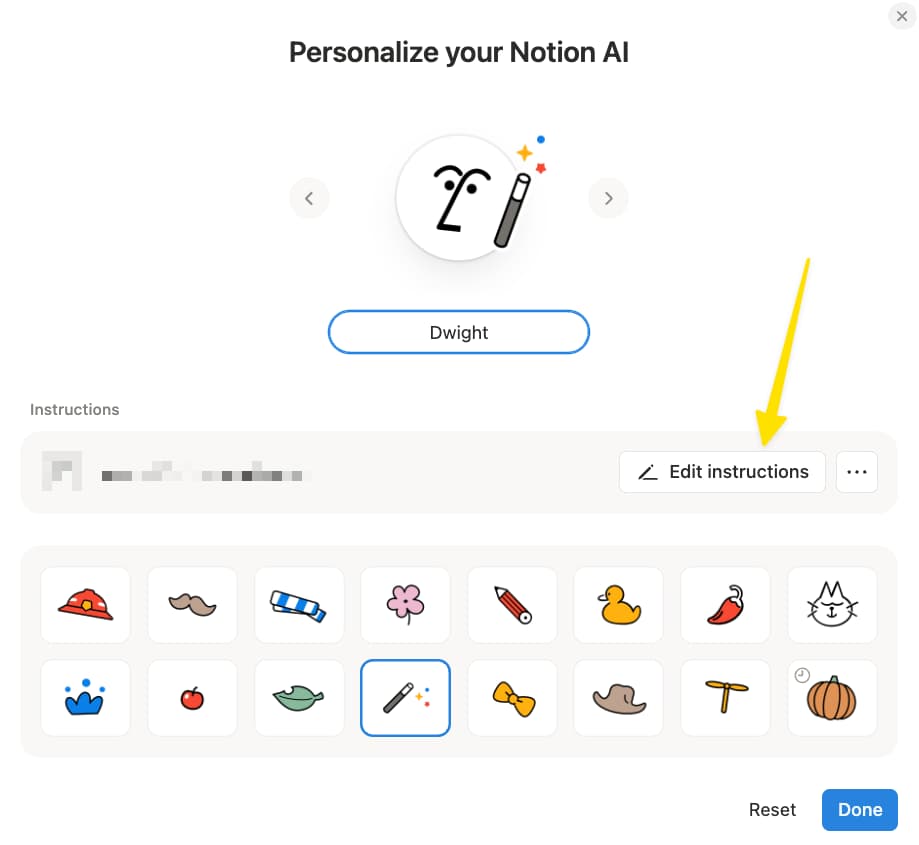
What a Master Prompt Is
Notion AI now lets you set general instructions—essentially a system prompt that Notion AI receives and follows every time you ask for something.
This is your AI operating system. It teaches AI about your workspace structure, your rules, and your standards—once. Then every request benefits from that foundational knowledge.
Three Functions of a Master Prompt
1. Operating System 📊
What is our data architecture?
Explain where AI finds which databases and what they’re used for. Show it how your system works.
Example:
Our workspace has three core databases:
- Projects (url) tracks all client work with status, owner, and deadlines
- Tasks (url) contains action items, always linked to a Project
- Knowledge (url) stores all documentation, tagged by Area
When creating tasks, always link them to the relevant Project.
When documenting processes, create pages in Knowledge with appropriate tags.
2. Guardrails 🚧
How do we add new entries?
Clear rules that prevent AI from making bad assumptions.
Example:
When creating a new task:
- Always ask for the due date if not provided
- Always assign to a person (never leave unassigned)
- Always link to a Project
- Set status to "Backlog" by default
When creating documentation:
- Always assign an Owner
- Always add at least one Area tag
- Use our standard document structure (Context, Process, Examples)
3. Speed ⚡
What can we clarify for every repetition?
Once AI knows your system and rules, work gets dramatically faster.
Example of the difference:
Without Master Prompt:
"Create a task in the Tasks database for reviewing the Q4 budget, assign it to
Sarah, link it to the Finance Project, set the due date to next Friday, and mark
it as high priority."
With Master Prompt:
"Task: Review Q4 budget, Sarah, next Friday, high priority"
AI already knows everything else.
The Difference This Makes
Without a Master Prompt, you’re micromanaging AI every single time—explaining your system repeatedly. With a Master Prompt, AI is already onboarded.
It knows your architecture, your rules, your standards. The difference between a new intern and an experienced team member.
7 Real-World Use Cases From Consulting Practice
Let’s see these principles in action across different complexity levels.
Prefer video to reading? Here’s a live walkthrough for all examples below.
1️⃣ Data Population: The Country Database
The Task: Create a database with all countries, country codes (ISO-2), and flag emojis.
Manual Time: 2-4 hours of tedious work.
With Structured Prompting: One clear prompt. Done in 2 minutes.
Key Learning: Any general knowledge that needs structuring? AI is your solution. Stop manually copying data from Wikipedia.
2️⃣ Formatting Consistency
The Challenge: Weekly content roundups, update reports, and announcements need consistent formatting.
The Solution: Create one example document. Reference it each time you ask AI to format new content.
The prompt pattern:
Format this update following the same structure and style as [example document].
Maintain heading hierarchy, use the same callout style, and match the tone.
Time Saved: 15 minutes per week—plus guaranteed consistency.
Bonus: When you update the format documentation, AI automatically applies the new standard. Unlike humans who tend to drift from guidelines.
3️⃣ Double Data Entry Elimination
The Problem: Some information lives in multiple places. Calendar appointments that also need to be in your Notion database.
The Solution: Screenshot your calendar, drop it in Notion, ask AI to update the corresponding database entries.
The Result: 80% of the benefit of a custom integration, 2 minutes of work instead of 15 hours of development.
When to use this: Integration exists but isn’t worth the setup cost, or you need a one-time sync.
4️⃣ Automated Announcements
The Situation: Executive team makes decisions in their private workspace. Those decisions need to reach the whole company—consistently, in the same format, in the right location.
The Implementation: Reusable prompt template that defines:
- Announcement format (using company template)
- Destination in the system (Company Updates database)
- What to communicate (decisions + context + next steps)
- Tone (clear, direct, no corporate speak)
The Impact: First-ever systematic approach to internal communication. No more scattered announcements that sometimes happen and sometimes don’t.
5️⃣ OKR Reporting Made Easy
The Old Way: Every few weeks, team members manually find their Key Results, assess progress, write reports, and submit updates.
Adoption? About 60%. Because it’s tedious and people forget.
The New Way: “Hey Notion AI, show me the Key Results I’m responsible for and help me create the progress reports.”
Why This Matters:
- Higher adoption rates (85%+)
- Reduced friction for team members
- People don’t need to master complex workflows
- They just need to remember the schedule and let AI handle the structure
The structured prompt ensures:
- AI pulls the right Key Results automatically
- Uses the standard reporting format
- Asks relevant questions about progress
- Creates properly formatted updates
- Links everything correctly
6️⃣ Database Migration and Restructuring
The Challenge: As companies scale from 15 to 150 people, database structures must evolve. The all-in-one Partners database needs to split into Clients, Investors, and Vendors.
The Old Way: Manual review of every entry. Careful property analysis. Data migration. Relation setup. Verification. One full workday of focused work.
With Structured AI Prompting:
- Define the new structure clearly
- Set explicit success criteria
- Let AI execute with progress tracking
- Review the finished work
Total time: 2 hours instead of 8 hours.
The Superpower: Notion scales beautifully from 5 to 500 people—structured AI prompting makes those structural transitions dramatically faster.
7️⃣ Automated Progress Reports ⭐
The Most Impactful Use Case
The Situation: Asset management client manages hundreds of portfolio companies. Every week, their team spends hours manually compiling progress reports for stakeholders.
What’s happening in that time? Nothing valuable.
No strategic analysis. No relationship building. No deal sourcing. Just collecting information that already exists in databases.
The Structured AI Solution:
- Assess: Documented the exact reporting workflow
- Collaborate: Created standardised process with team
- Draft: Built AI prompt template using all six principles
- Certify: Tested and refined until perfect
What AI Now Does:
- Reviews relevant database entries automatically
- Filters by timeframes and criteria
- Pulls associated tasks and updates
- Identifies problems and progress
- Makes decisions following documented guidelines
- Creates first-draft report in proper format
- Flags items needing human review
The Result in Numbers:
- Thousands of work hours saved over six months
- 80% of requirements met by first draft
- Team spends 3 minutes reviewing instead of 3 hours creating
- 100% consistency in reporting format and quality
The Result in Impact:
Highly qualified people can finally do what they were hired for—strategic portfolio analysis, relationship building with founders, identifying new investment opportunities.
Not compiling reports from data that already exists.
For more examples of systematic Notion implementations, explore our client case studies.
Common Questions About Structured Prompting
How long does it take to learn this?
The principles themselves take 10 minutes to understand. Applying them effectively takes practice – expect to get comfortable within 2-3 weeks of regular use.
Start with simpler tasks (formatting, data population) before moving to complex workflows (database migrations, automated reporting).
Does this work with Notion AI’s auto mode?
The principles work with any model, but Claude 4.5 Sonnet gives significantly better results for complex, multi-step work. Auto mode is fine for simple tasks but unreliable for structured workflows.
What if AI makes mistakes despite structured prompting?
Mistakes happen – but they’re dramatically reduced with structured prompting. When they do occur:
- Review your success criteria (were they specific enough?)
- Check if you provided step-by-step process (or left room for interpretation?)
- Verify AI had access to all necessary context
Usually, mistakes trace back to ambiguity in the prompt, not AI capability.
Can I use this for personal productivity, or is it just for teams?
Both! The principles apply equally to personal knowledge management and team collaboration. Your morning planning routine, project management, note organisation—all benefit from structured prompting.
How do I convince my team to adopt this approach?
Show, don’t tell. Pick one recurring task that frustrates everyone. Apply structured prompting. Share the before/after time savings. Let results do the convincing.
And if you’re wondering whether Notion is a good tool to run your startup on, check out this guide.
What’s the difference between a Master Prompt and structured prompting?
A Master Prompt is global context AI always has (your workspace structure, rules, standards). Structured prompting is how you frame individual requests (process, success criteria, autonomous operation).
They work together: Master Prompt = foundational knowledge, Structured Prompting = task-specific instructions.
Your Next Steps
You now understand the six principles of structured prompting and how they transform Notion AI from frustrating experiment into reliable co-worker.
Here’s how to put this into practice:
Start Small
Pick one recurring task that currently takes 30+ minutes. Apply the six principles. See the difference. Then expand from there.
Build Your Foundation
Before AI can truly excel, your Notion workspace needs solid structure. Clear databases, logical relationships, consistent organisation.
If you’re still figuring that out, explore our Learn Notion resources for foundational tutorials or get the help of certified consultants to set everything up for you.
Create Your Master Prompt
Once you’ve practised structured prompting, build your workspace Master Prompt. It’s the difference between training AI every time and having AI that already knows your system.
Document Your Processes
For recurring workflows, use the AC/DC framework. The investment pays off exponentially as you codify more processes.
Final Thoughts
The teams getting extraordinary results from Notion AI aren’t using different technology.
They’re using better prompting.
Structured prompting isn’t complicated but it is systematic.
It requires thinking through your process, defining success clearly, and trusting AI to work autonomously.
The payoff?
Hundreds of hours saved.
Complex workflows that run reliably.
Team members freed to do strategic work.
That’s not the future. That’s available right now, today, with the Notion AI you already have.
The only question is: will you use it?


